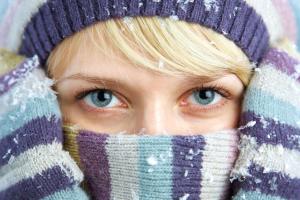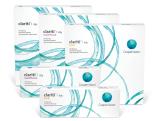
What you wear to head outdoors changes with the temperature and climate of each season, and your eyes are no exception. The way you prepare and protect for cold weather, dry heating and bright snowcapped landscapes is very important to your ocular wellbeing. In other words, just as you need to rethink your wardrobe as temperatures fall, so too should you rethink how you care for your eyes.
How to Deal with Dry Heat
Indoor heat and forced air from car vents dries out eyes just as it dries out your skin. One way to combat this is by using a humidifier. And, if you wear contact lenses and dry heat causes your eyes to struggle to stay comfortable, you can try rewetting drops. Just make sure to use ones labeled specifically for contact lens wear.
You may also want to discuss your contact lenses with your eye doctor. Switching to a different lens material may help alleviate winter dryness.
Shield Eyes from Reflective UV
The sun may feel hotter in the summer months, but because snow is so reflective, winter UV can be twice as dangerous.1 Sunglasses are your eyes’ best defense against dangerous UV rays, but not all sunglasses offer suitable protection, so check labels or bring them to your eye doctor to be checked out. You want to make sure your shades block 100 percent of UV rays.
Even with sunglasses, studies show that up to 45% of UV light is still reaching the eye.2 When light gets in from the top, bottom, and sides of sunglasses, it is known as Peripheral Light Focusing Effect (PLF).3 Because this UV is harmful, many people also wear contact lenses as an added layer of protection. Studies have shown that UV-blocking contact lenses can help block the peripheral light that sunglasses can't block. 3
Studies show that use of UV-blocking contact lenses reduces the PLF effect by 69% for UVA and 96% for UVB.2 In particular; CooperVision offers a variety of contact lenses with UV protection, including Avaira Vitality® lenses, which offer Class 1 UV protection that blocks more than 90% UVA and 99% UVB. 4
Play It Safe
Winter sports like snowboarding, skiing and ice-skating may be a lot of fun, but it’s vital that you take the time to protect your eyes. Always protect yourself against debris, snow, and sun. Talk to your eye doctor about the sports you engage in and detail your lifestyle needs so a suitable option can be found.
If you don’t have contact lenses, ask your eye doctor about wearing them for sports. This way, you won’t have glasses falling off during winter sports, fogging up when you come in from the cold, or just being clunky under protective eyewear that you may have to wear. Contact lenses for winter sports also offer a wider field of peripheral vision, less vision distortion, and more vision stability.
Whether you are a full-time or a part-time contact lens wearer, a daily disposable like MyDay® or clariti® 1 day is great for winter sports because they are made of silicone hydrogel, which has the added benefit of outstanding oxygen transmissibility.
Winter elements can have meaningful effects on your eyes, but if you prepare your eyes as you would the rest of your body, you’ll be much better equipped to deal with climate-based variables so you can enjoy the season to its fullest.
Nothing in this blog post is to be construed as medical advice, nor is it intended to replace the recommendations of a medical professional. For specific questions, please see your eye care practitioner.
1. The Vision Council. 2016 UV Protection Report. Available at https://www.thevisioncouncil.org/sites/default/files/TVC_UV_Report2016.pdf.
2. Clinical Controversies: Point/Counterpoint. Contact Lens Spectrum, Volume: 32, Issue: January 2017. Available at http://www.clspectrum.com/issues/2017/january/clinical-controversies-point-counterpoint.
3. Kwok LS, Kuznetsov VA, Ho A, et al. Prevention of the adverse photic effects of peripheral light-focusing using UV-blocking contact lenses. Invest Ophthalmol Vis Sci.2003;44:1501-1507.
4. Warning: UV-absorbing contact lenses are not substitutes for protective UV-absorbing eyewear, such as UV-absorbing goggles or sunglasses, because they do not completely cover the eye and surrounding area. Patients should continue to use UV-absorbing eyewear as directed.






